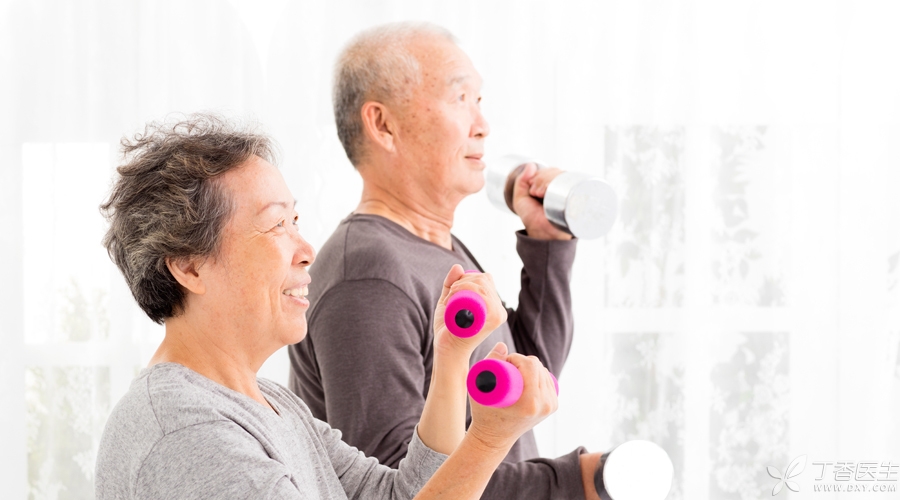If we say that the best practice of national fitness is done, it may really be the middle-aged and elderly people.
All the year round, every morning and evening, the middle-aged and the elderly account for the vast majority of the people who see active exercise in the community park.
It is good to have the will to keep fit and be able to keep exercising, but there are various ways of exercising, which are sometimes quite worrying. For example, some people hit trees with their backs, some beat each other, some raised their voices, and some walked backwards… … …
These seemingly strange exercise methods seem to be quite popular with middle-aged and elderly friends, and many people are even more convinced of their exercise effects.
Are these exercises really better than regular exercises?
In fact, if you don’t consider your own condition and choose the wrong form of exercise, you will not only fail to achieve the expected exercise effect, but also may cause harm to your body.
It is not advisable to hit a tree.
Some old people will hit trees with their shoulders, back and waist, which is said to relieve pain, relax meridians and activate collaterals, and improve spinal problems.
But in fact, there is no exact scientific basis for this statement.
As we get older, There will be some irreversible degeneration of the body, Problems such as osteoporosis, muscle atrophy and articular cartilage degeneration occur. Middle-aged and elderly friends’ body toughness and muscle strength are not as good as those of young people, their impact resistance is low, they blindly hit trees with their bodies, their parts are improper, their strength is too large or their duration is long, and they are easy to cause soft tissue injury or blood pressure rise.
It is not recommended for any elderly person to use this exercise method. Even if it is reluctantly said that it has massage effect, there is no need to adopt such a drastic method at all.
The effect of beating the body is limited.
Beating each other is also one of the common exercises.
The scene is usually that groups of aunts beat each other hard on the shoulders, arms, back, lower back, etc. Sometimes they also shout loudly: hypertension, pat off! Diabetes, take it off!
It should be noted that if the beating position, intensity and frequency are not correct, there is also a risk of injury.
The probability of causing great injury is not high, but the psychological benefits of such activities may far outweigh the physical benefits.
If you are willing to do this, when beating, pay attention to moderate and rhythmic force, which can stimulate local tissue blood circulation and relieve muscle stiffness and discomfort to a certain extent.
Don’t shout loudly, raise your voice
Announcers, singers, etc. may need to do [morning classes] and [open their voices] by reciting aloud, etc. But for ordinary people, this exercise method really does more harm than good.
In the morning, the vocal cords are relatively relaxed, so suddenly they are pulled up and shouted, which is easy to burden the vocal cords.
Shout loudly and raise one’s throat may cause hypoxia, dizziness and seeing stars. In addition, long-term loud speech and unreasonable vocal sound will also increase the probability of vocal cord polyps.
If you want to exercise your heart and lung function, regular aerobic exercise is quite good.
Crawling exercises vary from person to person.
Crawling, a form of exercise, has a long history. It originated from Hua Tuo’s [Wuqinxi] and achieved the purpose of fitness by imitating the crawling movements of animals.
Crawling training can improve the stability of shoulder joint and trunk, as well as the coordination of upper and lower limbs and the whole body. In addition, crawling can also release most of the spinal pressure.
However, crawling fitness requires high requirements on people’s core muscle groups and does not have universal applicability.
Patients with poor wrist and knee joints and serious cardiovascular and cerebrovascular diseases are not suitable for crawling exercise.
Attention should be paid to safety when walking backwards.
Backward walking can enhance muscle strength and improve balance level, and is beneficial to the rehabilitation of knee joint diseases and the prevention of anterior cruciate ligament injury.
However, it is better for the elderly to be accompanied when walking backwards, because it is not easy to notice the road conditions and there is a risk of falling.
Recommended Exercise Methods
Step 1 Take a walk
The easiest and safest exercise.
Choosing a pair of comfortable sports shoes, controlling the movement speed, keeping the posture of holding one’s head high, and walking for more than half an hour every day are good for preventing chronic diseases such as cardiovascular diseases.
2. Square Dance and Taijiquan
A very good form of aerobic exercise, in addition to improving heart and lung function, relieving osteoporosis and body pain, can also exercise the body’s flexibility and coordination ability. In addition, it can also expand social activities and keep old friends in good mental state.

3. Strength training
Elderly people can use lighter dumbbells, elastic belts and other props for strength training, which helps maintain muscle strength, delay muscle atrophy and promote metabolism.
To sum up, matters needing attention in the exercise of the elderly:
- Insist, 5 days a week, at least 30 minutes a day; Step by step, do not exercise too much; Monitoring blood sugar and blood pressure before and after exercise; Pay attention to safety and put on appropriate sportswear and sneakers. If there is a chronic disease, remember to consult your doctor in advance if you can exercise.
It is better to move than just sitting there, but if you can pay attention to the way you exercise, on the one hand, you can avoid unnecessary injuries, on the other hand, you can also make the exercise effect get twice the result with half the effort.
